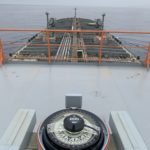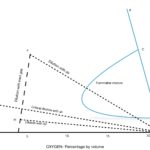Magnetic compass parts
We have discussed earlier about the basics of the magnetic compass. Which includes the use of magnetic compass , magnetic compass principle and magnetic compass working.
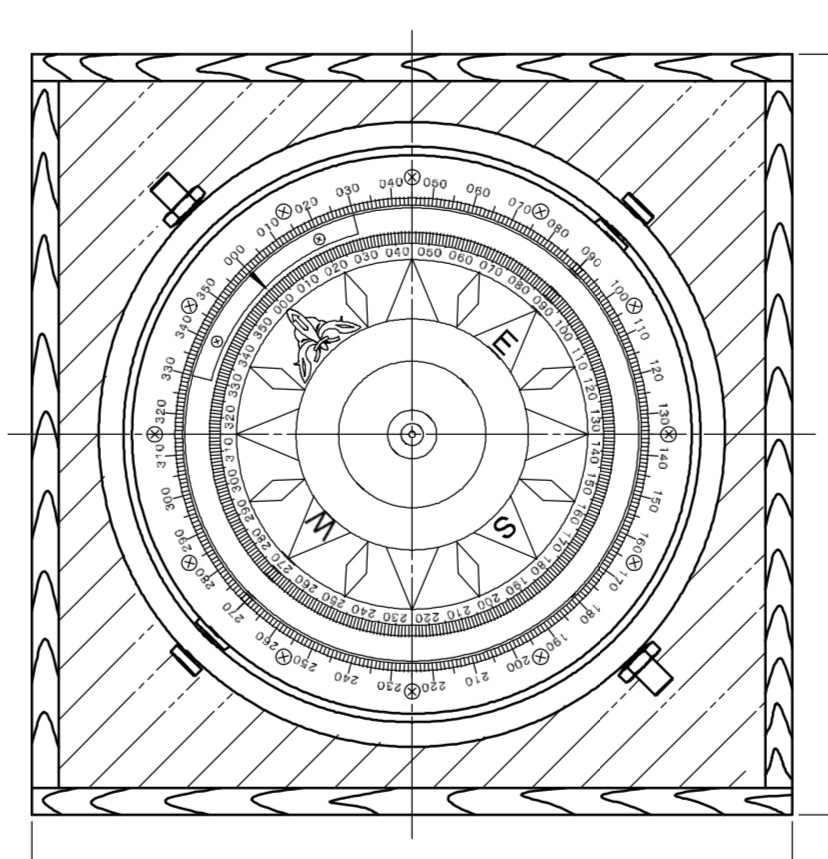
We also discussed about the magnetic compass coefficients and the magnetism.
Which elaborates about how the magnetic poles are formed and how they affect the working of the magnetic compass.
So in this blog let’s see what all parts and correctors are there in a magnetic compass.
The parts of the magnetic compass are a follows:
– Compass bowl (which includes compass card)
– Compass correctors (quadrantal correctors, flinder bars, healing error bucket and magnets)
Fwd and aft magnets and Athwartship magnets
The parts of the magnetic compass are pretty much similar on all the vessels.
On ships, the magnetic compass arrangement is fitted on the monkey island. Which is just above the bridge.
And a telescopic viewing marrangement is made, so that the helmsman can see the magnetic heading from the steering position.
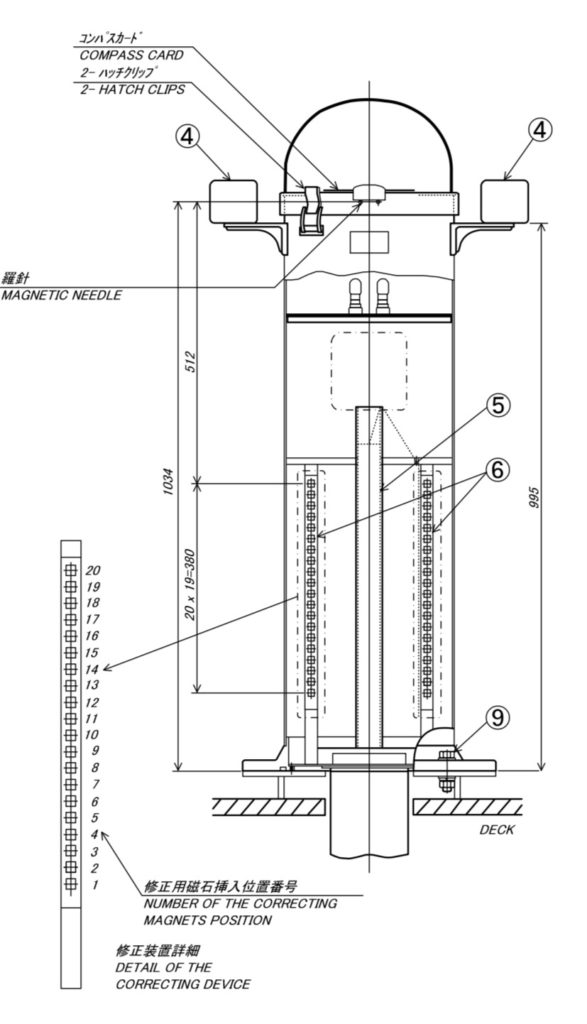
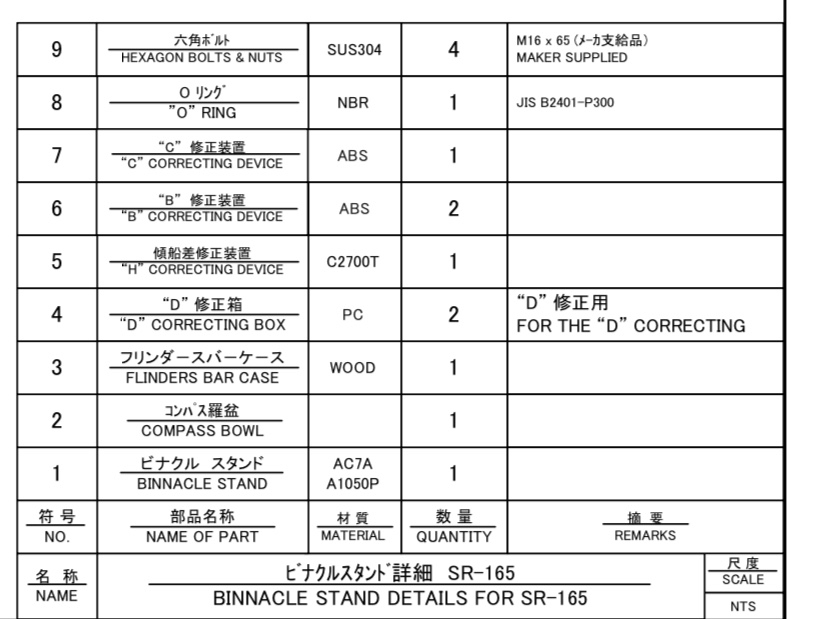
So let’s explore the parts of the magnetic compass-
Compass bowl
Compass bowl is the part of the magnetic compass, in which the compass card is fitted.
Then there is liquid filled inside the compass bowl (in wet compass card), which reduces any friction effects while the ship is moving.
Thus the liquid helps to keep the compass card horizontal in any condition of trim or list. 

The compass bowl is fitted on the gimbal arrangement.
The gimbal arrangement is fitted in order to make the compass stabilise in any condition of rolling/pitching or any angle of heel.
Compass card is marked with degrees from zero(0) to 360 degrees.
Gimbal arrangement
Gimbal arrangement, as discussed earlier, fitted on the binnacle. Which provides the strength and stability to the compass bowl.
Basically gimbal arrangement is the projection, which are fitted at the same level as the compass card.
So if the ship rolls or pitches, the bowl would remain horizontal because its centre of gravity is below the gimbals.
If we see the compass from the top, then we can see a ring around the compass bowl. The ring is called the “gimbal ring”.
The gimbals are triangular in cross-section with their apex downwards.
And the gimbals rest on ‘V’ shaped depressions in a horizontal ring called the gimbals ring which encircles the compass bowl. The gimbals ring itself is pivoted at its forward and after sides. The top of the verge ring is grooved to accommodate the azimuth mirror.
Binnacle
While the binnacle is a cylindrical arrangement, which is made of non magnetic material.
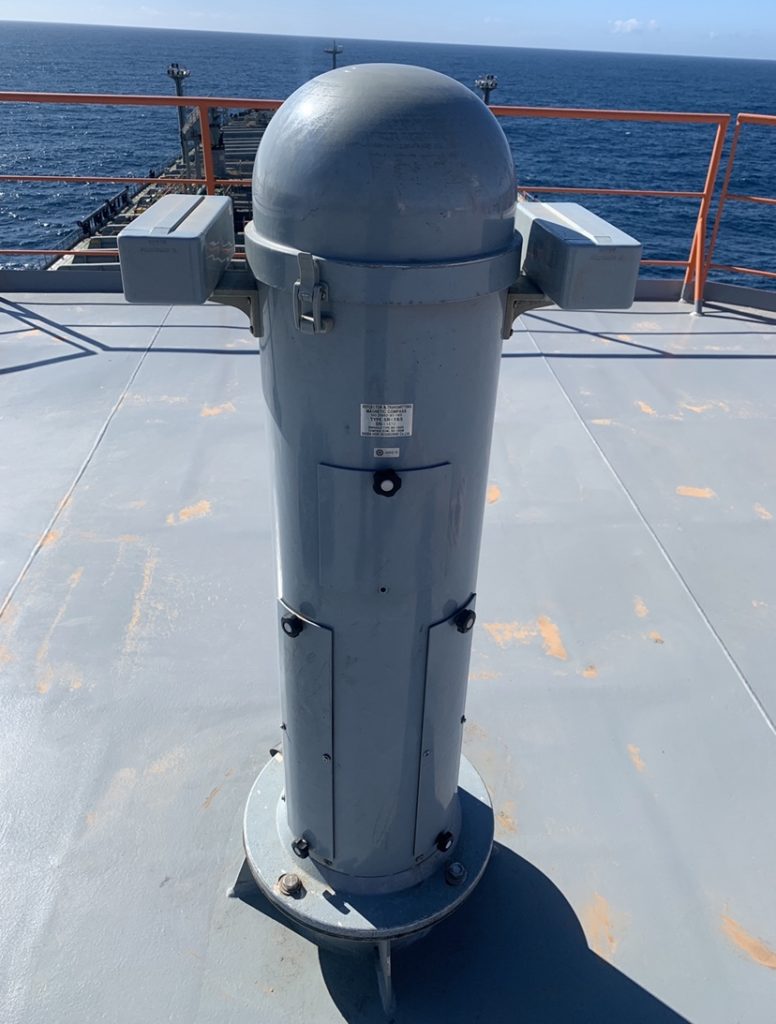
The non magnetic material is aluminium, wood or brass. Which is used so that material does not affect the magnetic heading.
While the upper part of the binnacle contains the compass bowl and the gimbal arrangement.
On the other hand, the lower part of the binnacle has a few holes in it. The holes are in both the directions, the fed and aft direction and the athwartship direction.
These holes are used to place the corrector magnets.
The lower binnacle also has one hollow tube and bucket arrangement inside it.
Then there are magnets placed inside the vertical tube. The tube and bucket arrangement is made to correct the magnetic compass for the healing error.
Compass correctors
Compass correctors are installed and used in order to correct the magnetic compass for its heading.
Now if you are wondering, why do we have to correct the compass for its heading. I mean why it doesn’t show the right heading the first time.
So let’s get to the point. As you know that the magnetic compass is based upon the magnetic properties of the earth.
If there are no other factors to affect the magnetic property of the compass, then it will show the right desired heading.
But we know that the ship itself is made of iron and have too many parts made of materials, which affect the compass heading.
That why in order to correct the compass heading for the all the external sources, the correctors are applied. So that the compass shows the right heading at all times in any part of the world.
The compass corrector are as listed below-
Flinder bars
When you see the binnacle, you must have noticed a cylinder like arrangement fwd or aft of the binnacle.
The cylinder contains the flinder bar magnets.
Flinder bar magnets are made of soft iron and are used to compensate for the vertical component of ship’s magnetic field.
Quadrantal spheres
While the quadrantal spheres are fitted on both sides of the the binnacle.
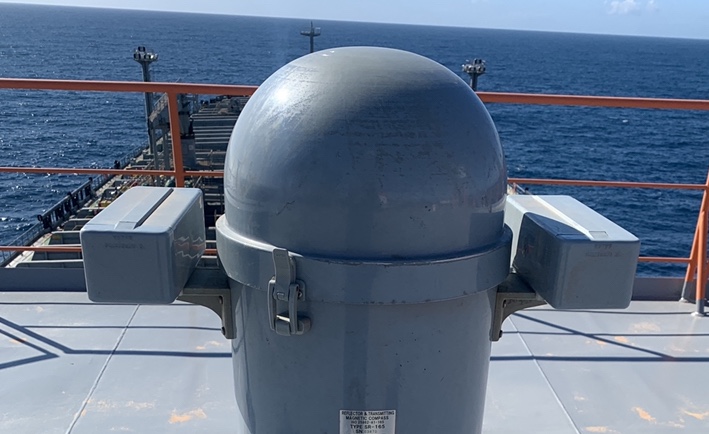
Spheres are made of soft iron and as you can see in the picture, they are placed on port and stbd side of the compass bowl and their distance can be adjusted away or near to the compass binnacle as required.
Actually the spheres are used to correct the quadrantal deviation, that is resulted due to induced magnetism in the horizontal soft iron of a ship by the horizontal component of the earth’s magnetism.
The amount of deviation to be corrected determines the position of the spheres and its distance from the binnacle.
Heeling magnets
The heeling magnets are cased inside a bucket or tube, which is located vertically below the centre of the compass.
Heeling magnets are used to correct the deviation caused by the ship’s heel.
The heel causes the deviation to change by a value called the heeling error.
As you must have noticed the magnetic heading changing when the vessel is rolling. That’s because the heeling error varies with the angle of the heel.
So the amount of deviation correction can be changed by two ways.
It can either be changed by increasing or decreasing the number of magnets inside the bucket.
Or it can be changed by raising or lowering the bucket.
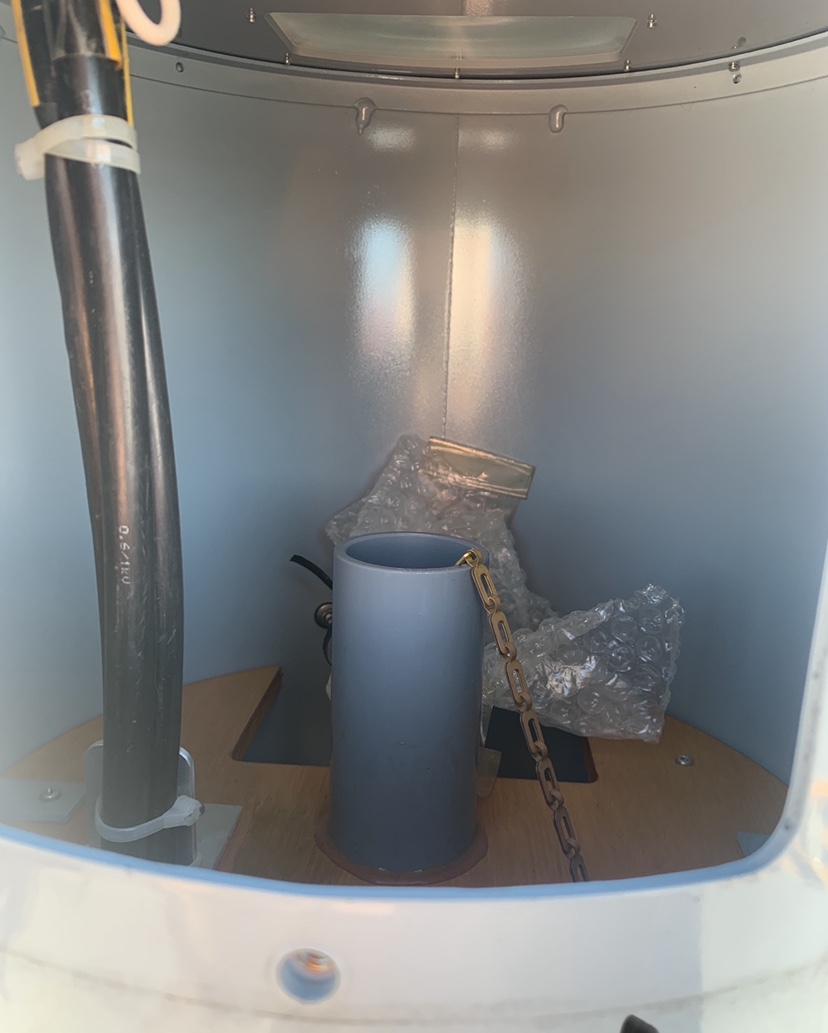
F & A and Athwartship magnets
These are the basic and simplest correctors used in the compass.
These magnets are of cylindrical shape of 8” in length and a diameter of 3/8” and 3/16” and used to correct “Permanent B” and “permanent C” coefficients.
For Permanent B to be corrected, magnets are placed in F&A direction in such amount, so as to nullify or cancel the permanent B coefficient.
While the Permanent C is corrected by placing the magnets in Athwartship direction nullifying its effects.
